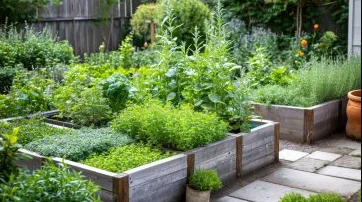City life isn’t exactly known for open plots of fertile land. But the lack of sprawling lawns hasn’t stopped urban gardeners from getting their hands dirty. Figuring out how to build raised garden beds is often the turning point. It transforms balconies, patios, and cramped backyards into actual food-growing zones.
● Measure Twice, Regret Never
Space constraints are real. Before grabbing lumber and seeds, measure every inch of available area. Will the bed fit without blocking the door? Can sunlight reach it for at least 6 hours a day? Sketch it out and stare at it. Then cut the wood. Raised beds should be at least 6 inches deep. More depth means better root rooms and happier plants.
● Pick the Right Materials
Pressure-treated wood might last longer, but not everyone’s comfortable with potential chemical leaching near food crops. Cedar is durable, naturally resists rot, and doesn’t look awful, which helps if your garden is doubling as outdoor decor. Galvanized metal and concrete blocks also work.
Make sure there’s good drainage. Raised beds without drainage holes or a gravel layer underneath are just water buckets pretending to be gardens.
● Smart Soil, Smart Results
Urban soil is often junk. It’s either too sandy, too compacted, or loaded with stuff you would rather not think about. Raised beds let you skip the drama and pour in a custom mix that plants will actually enjoy. A solid option is one-third compost, one-third peat moss or coconut coir, and one-third vermiculite or perlite.
● Plant Like You Mean It
Crowding is the enemy of productivity. But so is underplanting. Try square-foot gardening principles; divide the bed into 12”x12” grids and assign each square a crop based on its spacing needs. You will get more out of every inch without overwhelming your plants.
Go heavy on herbs, lettuces, radishes, and bush-type vegetables. Tomatoes and peppers do well in raised beds too, but give them room and good support. Mix in flowers if you want pollinators to swing by. Marigolds and nasturtiums pull double duty and look nice and help ward off some pests.
● Water Wisely, Not Constantly
City sun reflects off concrete and brick, making raised beds dry out faster than you would expect. But daily soaking isn’t the answer. Stick a finger into the soil. IF it's dry two inches down, you should water it more.
Drip irrigation or soaker hoses work great for small beds and reduce water waste. If those feel like overkill, a watering can with a long spout lets you reach every corner.
Conclusion
Urban gardening needs intention, smart choices, and a willingness to experiment more than it needs grand spaces. Raised beds make small spaces surprisingly productive, offering structure, better soil, and more control over what you grow. With the right setup, even the tiniest balcony or courtyard can turn into a thriving patch of green. Choosing good soil products from a reputable company can help you in your endeavors.







